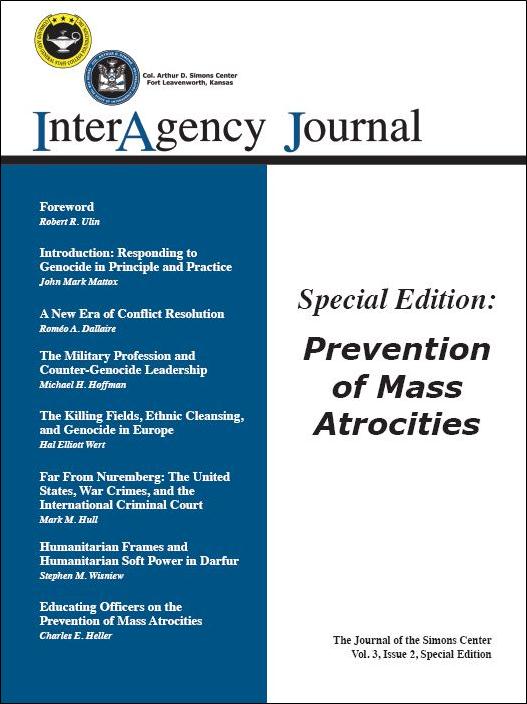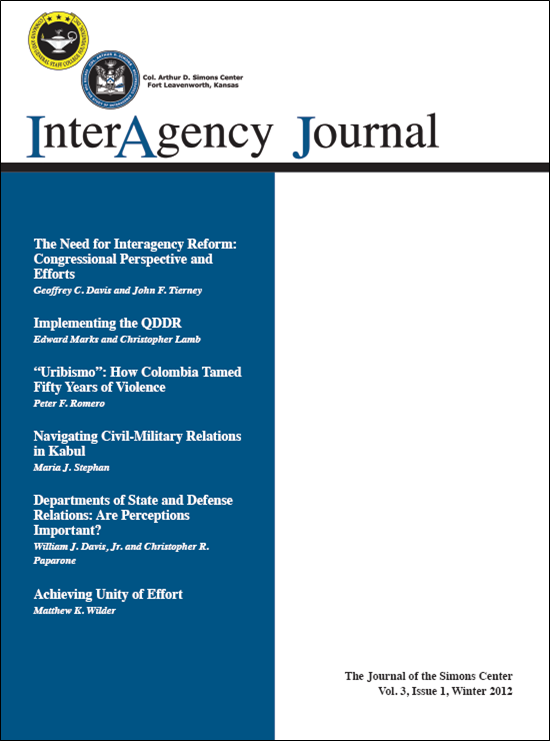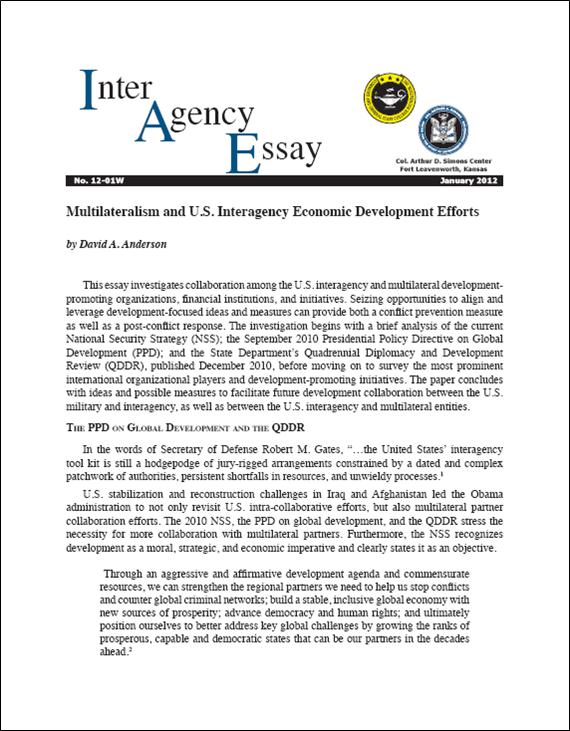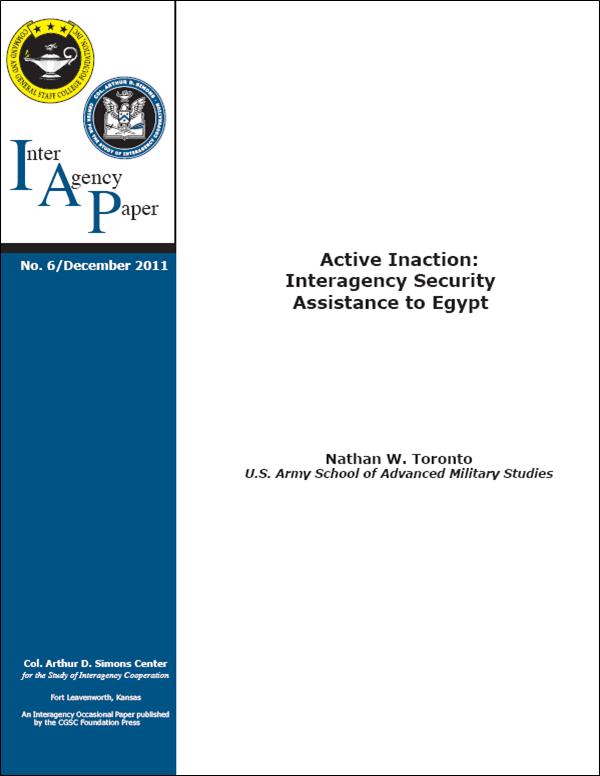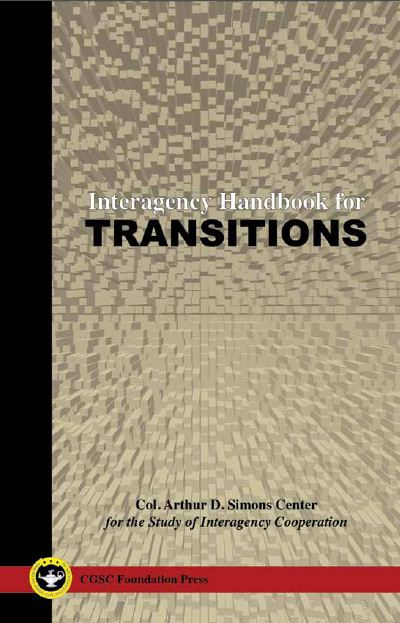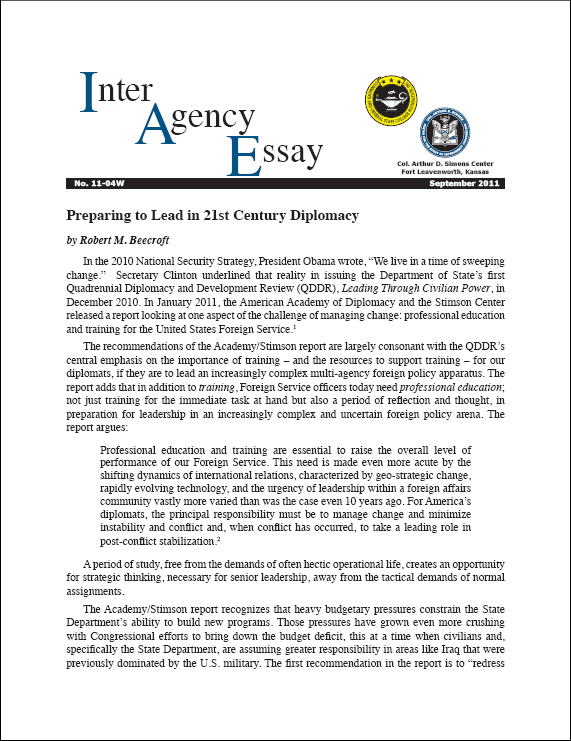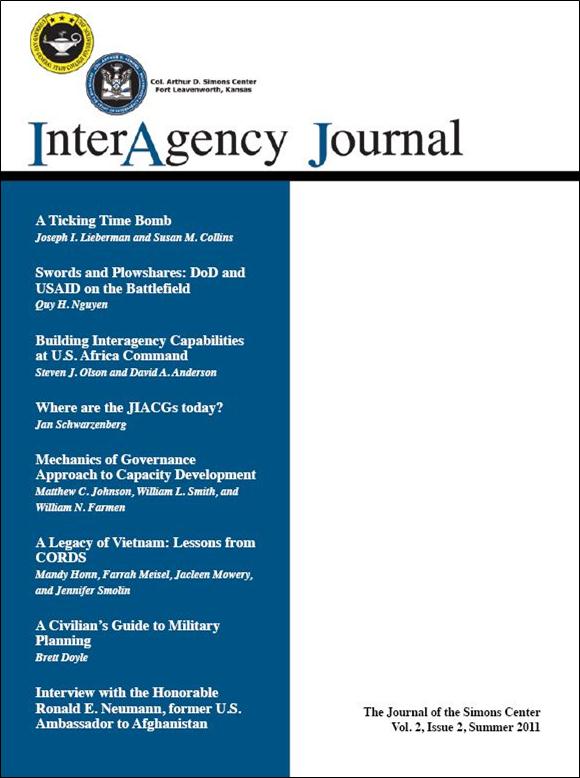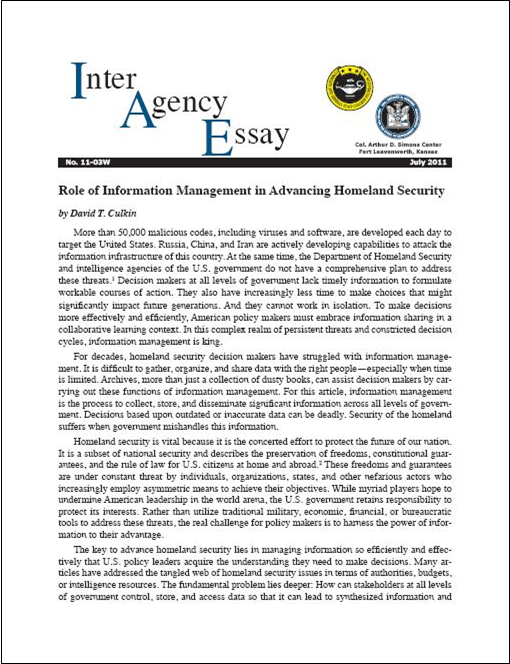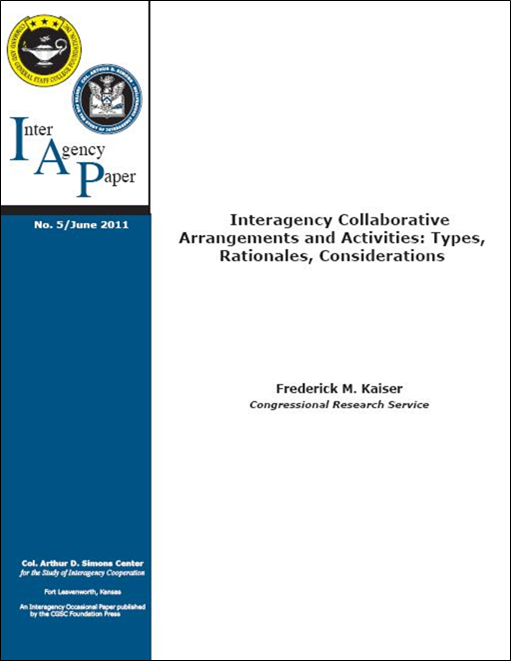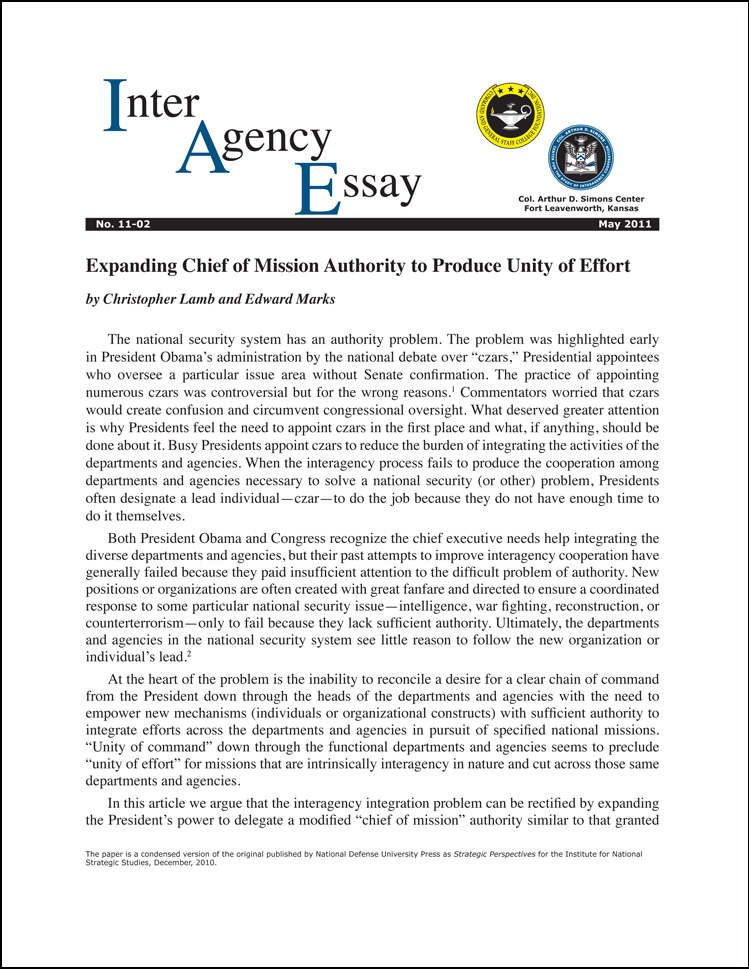Publications
The Simons Center Publications
The Simons Center is committed to the development of military leaders with interagency operational skills and an interagency body of knowledge that facilitates broader and more effective cooperation and policy implementation within the United States government. As part of this mission, the Simons Center produces a number of publications that cover a broad range of interagency topics including national security; leader development; ethics; counterterrorism; stabilization and reconstruction operations; homeland defense and security; and disaster preparation and response. The Simons Center’s main publications include the:
The InterAgency Journal (IAJ) is a peer-reviewed, national security studies journal, published semiannually. Journal articles are approximately 3,000 to 5,000 words in length.
The InterAgency Essay (IAE) series consists of individually published essays of 1,000 and 3,000 words in length that are not peer-reviewed.
The InterAgency Paper (IAP) series includes in-depth studies, individually published, of approximately 5,000 to 10,000 words in length. IAP submissions are peer-reviewed.
The InterAgency Studies (IAS) series consist if sponsored projects of the Simons Center on a particular issue and may include multiple articles or essays.
Other publications include special reports, web-exclusive publications and books. See the Simons Center Publication Descriptions for further information on each of our publication types.
Individuals wishing to receive hard copies of Simons Center’s InterAgency Journal should contact editor@thesimonscenter.org. To receive updates about the release of new Simons Center publications, Simons Center news and events, and other interagency news and events via email, please sign up for email alerts – an email alert sign up is available on most every page of the Simons Center website.
The Simons Center is always looking for authors to contribute manuscripts reflecting their experience, study, and insight. Please go to our Contribute Content page for complete submission instructions.
Disclaimer: The works published by the Simons Center represent the opinions of the authors and do not reflect the official views of any United States government agency, the Department of Defense, the Department of the Army, the U.S. Army Command and General Staff College, the Command and General Staff College Foundation, the Simons Center, or any other non-government, private, public, or international organization.
Inside this issue: A New Era of Conflict Resolution, by Roméo A. Dallaire; The Military Profession and Counter-Genocide Leadership, by Michael H. Hoffman; The Killing Fields, Ethnic Cleansing, and Genocide in Europe, Hal Elliott Wert …and much more.
... Read MoreInside this issue: The Need for Interagency Reform: Congressional Perspective and Efforts, by Geoffrey C. Davis and John F. Tierney; Implementing the QDDR, by Edward Marks and Christopher Lamb…and much more.
... Read Moreby David A. Anderson
This essay investigates collaboration among the U.S. interagency and multilateral development-promoting organizations, financial institutions, and initiatives. U.S. interagency collaboration and information sharing must take place among all U.S. agencies that assist in economic development…
... Read MoreThis content is exclusive to Simons Center Fellows. Don’t have an account? Become a Simons Center Fellow to access all available publications. Visit the “My Account” page to login or reset your password.
... Read MoreIn early 2011, senior leaders from across the U.S. interagency community participated in a discussion on how to overcome the “messy” transitions in which they so often struggled. This handbook is the result of those exchanges…
... Read Moreby Robert M. Beecroft
Ambassador Beecroft reviews the State Department’s 2010 Quadrennial Diplomacy and Development Review (QDDR) and a 2011 report by the American Academy of Diplomacy and the Stimson Center, both reports stress the importance of professional education and training for the United States Foreign Service, and state that professional education and training are essential to the overall performance of the U.S. Foreign Service if it is to lead an increasingly multi-agency foreign policy apparatus…
... Read MoreInside this issue: A Ticking Time Bomb, by Joseph I. Lieberman and Susan M. Collins; Swords and Plowshares: DoD and USAID on the Battlefield, by Quy H. Nguyen…and much more.
... Read Moreby David T. Culkin
In an era of persistent threats to the homeland and constricted decision cycles, American policy makers must embrace information sharing if they are to protect the citizens and infrastructure of the United States. The key to advancing homeland security lies in managing information so efficiently and effectively that U.S. policy leaders rapidly acquire the understanding they need to make decisions…
... Read Moreby Frederick M. Kaiser
Interagency coordinative arrangements and activities—called for in public laws, executive orders, and administrative directives—appear to be growing in number, prominence, and proposals throughout virtually all individual policy areas and across-the-board. Underlying this growth are several developments…
... Read Moreby Christopher Lamb and Edward Marks
In this essay we argue that the interagency integration problem can be rectified by expanding the President’s power to delegate a modified “chief of mission” authority similar to that granted ambassadors to oversee and direct the activities of employees from diverse government organizations working in a foreign country…
... Read More"*" indicates required fields
